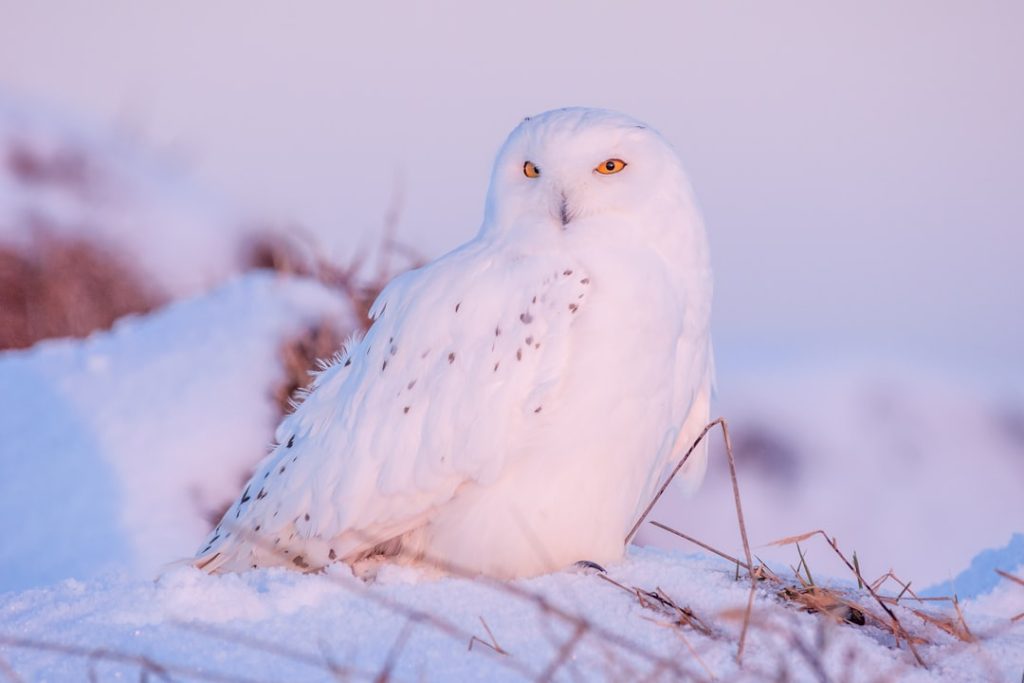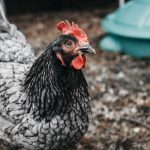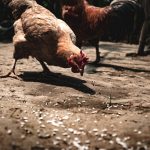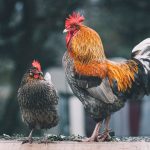Hawks are diurnal birds of prey renowned for their sharp talons, exceptional eyesight, and efficient hunting abilities. These raptors pose a significant threat to chickens and other small animals due to their opportunistic hunting nature. Hawks employ aerial hunting techniques, utilizing their speed and agility to capture unsuspecting prey.
They often perch in elevated positions to survey their surroundings for potential targets. Identifying characteristics of hawks include sharp, hooked beaks, long and powerful wings, and piercing yellow eyes. Common species that may threaten chickens include the red-tailed hawk, Cooper’s hawk, and sharp-shinned hawk.
While hunting behaviors may vary slightly between species, all are capable of preying on chickens. Hawks are primarily active during daylight hours, with peak activity occurring in the early morning and late afternoon. They prefer open areas that provide clear visibility of potential prey, making free-range chickens particularly vulnerable.
Understanding hawk behavior and habits is essential for chicken owners to implement effective protective measures for their flocks.
Table of Contents
- 1 Creating a Secure Coop and Run for Your Chickens
- 2 Implementing Visual Deterrents to Scare Off Hawks
- 3 Using Sound Deterrents to Keep Hawks at Bay
- 4 Providing Adequate Shelter and Cover for Your Chickens
- 5 Monitoring Your Chickens’ Behavior and Surroundings
- 6 Seeking Professional Help and Advice if Necessary
- 7 FAQs
- 7.1 What are some effective methods for keeping hawks away from chickens?
- 7.2 Are there any natural deterrents that can be used to keep hawks away from chickens?
- 7.3 What should I do if I spot a hawk near my chicken coop?
- 7.4 Are there any legal methods for deterring hawks from chickens?
- 7.5 What are some signs that a hawk may be targeting my chickens?
Key Takeaways
- Hawks are a threat to chickens and can exhibit predatory behavior.
- Building a secure coop and run is essential to protect chickens from hawk attacks.
- Visual deterrents such as scarecrows and reflective objects can help keep hawks away from your chickens.
- Sound deterrents like wind chimes and predator calls can also help deter hawks from targeting your chickens.
- Providing adequate shelter and cover in the form of trees, shrubs, and structures can offer protection for chickens against hawk attacks.
Creating a Secure Coop and Run for Your Chickens
Secure Coop and Run Design
A well-built coop and run can provide a safe haven for your chickens, protecting them from aerial attacks. When designing a coop and run, it’s important to consider the size and strength of the wire mesh used. The wire mesh should be strong enough to withstand the talons of a hawk and small enough to prevent them from reaching through.
Additional Safety Measures
In addition to a secure coop and run, it’s important to provide adequate shelter within the run for your chickens. This can include natural cover such as bushes or trees, as well as man-made structures such as chicken coops or shelters. Providing ample shelter within the run can give your chickens a place to hide if they sense danger from above.
Strategic Placement of the Coop and Run
It’s also important to consider the layout of the coop and run in relation to surrounding trees and structures. Placing the coop and run in an open area with minimal overhead cover can make it more difficult for hawks to approach undetected.
Implementing Visual Deterrents to Scare Off Hawks
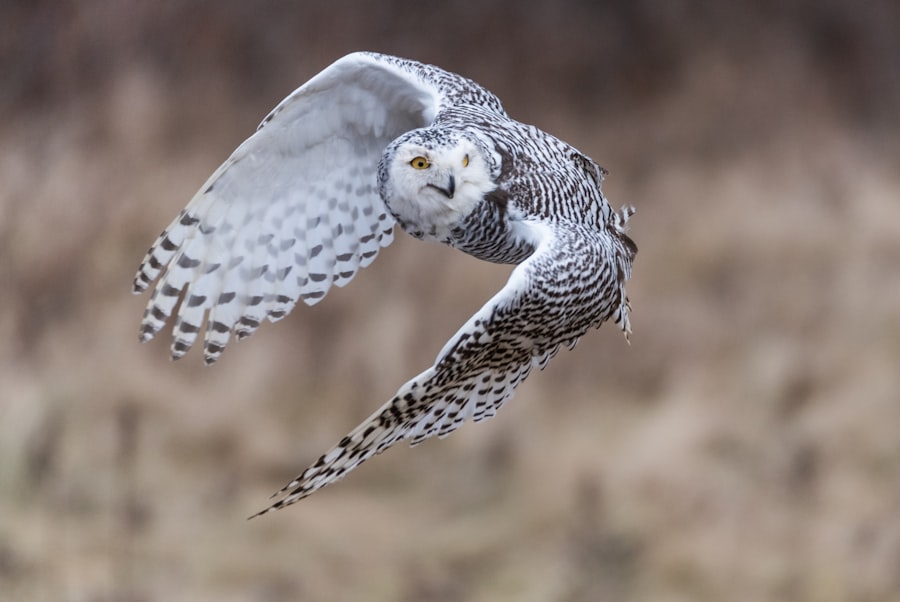
Visual deterrents can be an effective way to scare off hawks and protect your chickens. One common visual deterrent is the use of reflective objects such as shiny tape or CDs. These reflective objects can create flashes of light that may startle or confuse hawks, causing them to reconsider approaching your property.
Another visual deterrent is the use of scarecrows or predator decoys. Placing a lifelike predator decoy such as an owl or hawk in the vicinity of your coop and run can create the illusion of a threat, deterring real hawks from approaching. Another visual deterrent that can be effective in scaring off hawks is the use of motion-activated devices.
These devices can emit sudden bursts of light or sound when triggered by movement, startling hawks and causing them to flee. Additionally, installing bird netting or wire mesh over the top of the run can create a physical barrier that deters hawks from attempting to swoop down on your chickens. By implementing visual deterrents, chicken owners can create a hostile environment for hawks, reducing the likelihood of an attack on their flock.
Using Sound Deterrents to Keep Hawks at Bay
In addition to visual deterrents, sound deterrents can also be effective in keeping hawks at bay. One common sound deterrent is the use of predator calls or distress calls. These recordings can mimic the sounds of predators or distressed animals, signaling danger to hawks and causing them to steer clear of your property.
Another sound deterrent is the use of wind chimes or bells. The constant noise created by these devices can disrupt the peaceful environment that hawks prefer, making them less likely to linger in the vicinity. Another effective sound deterrent is the use of ultrasonic devices.
These devices emit high-frequency sounds that are unpleasant to hawks, causing them to avoid the area. Additionally, some chicken owners have found success in using radios or other electronic devices to create continuous noise within the vicinity of their coop and run. By using sound deterrents in conjunction with visual deterrents, chicken owners can create a multi-faceted approach to protecting their flock from hawks.
Providing Adequate Shelter and Cover for Your Chickens
In addition to creating a secure coop and run, providing adequate shelter and cover for your chickens within their outdoor space is crucial for protecting them from hawks. Natural cover such as bushes, shrubs, and trees can provide hiding spots for your chickens if they sense danger from above. Planting dense vegetation around the perimeter of the run can create a barrier that obstructs the view of hawks and makes it more difficult for them to target your chickens.
Another way to provide shelter and cover for your chickens is by incorporating man-made structures within the run. This can include chicken coops, shelters, or even simple structures such as wooden pallets leaned against a fence. These structures can provide additional hiding spots for your chickens and create obstacles that deter hawks from approaching.
By providing adequate shelter and cover within the outdoor space for your chickens, you can give them a better chance of evading potential attacks from hawks.
Monitoring Your Chickens’ Behavior and Surroundings
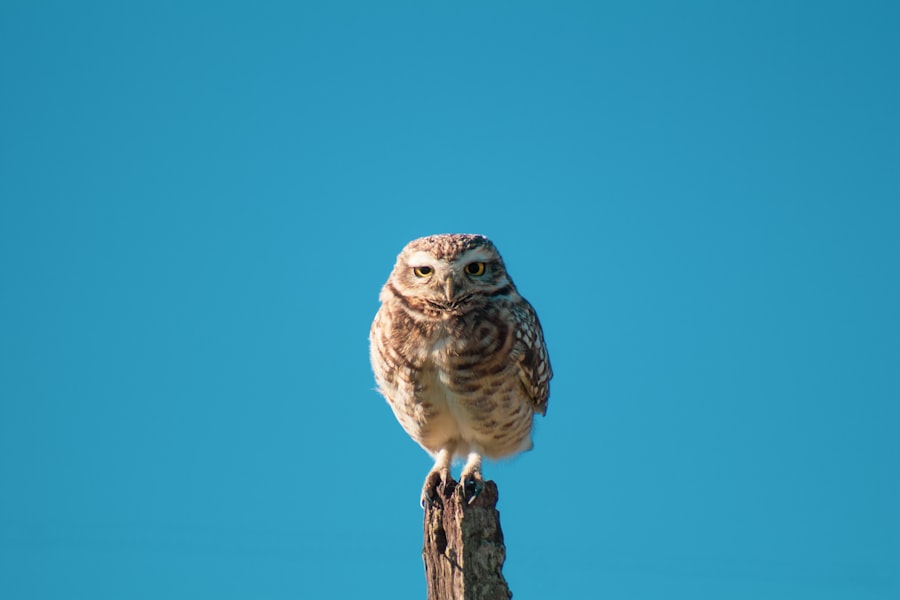
Recognizing Signs of Distress
By observing your chickens’ behavior, you can learn to identify signs of distress or alarm that may indicate the presence of a predator like a hawk. For instance, if your chickens suddenly become agitated or vocalize loudly for no apparent reason, it may be a sign that they have spotted a hawk nearby.
Monitoring the Environment
Paying attention to the behavior of other wildlife in the area, such as birds or small mammals, can also provide clues about potential threats. This can help you stay one step ahead of potential predators.
Securing the Coop and Run
In addition to monitoring your chickens’ behavior, it’s essential to regularly inspect the perimeter of your coop and run for signs of potential entry points for hawks. This includes checking for gaps in wire mesh or netting, as well as ensuring that any overhead cover is secure and free from potential perches for hawks. By staying vigilant and regularly monitoring your chickens’ behavior and surroundings, you can take proactive measures to protect them from potential attacks by hawks.
Seeking Professional Help and Advice if Necessary
If despite your best efforts, you find that hawks continue to pose a threat to your chickens, it may be necessary to seek professional help and advice. Wildlife experts or pest control professionals may be able to provide additional insight into effective deterrent methods or offer solutions tailored to your specific situation. Additionally, local agricultural extension offices or poultry organizations may have resources or information available to help you address hawk predation on your flock.
In some cases, it may be necessary to obtain permits or licenses in order to legally implement certain deterrent methods or take more aggressive action against hawks that pose a persistent threat to your chickens. Seeking professional help can ensure that you are in compliance with local regulations while also effectively protecting your flock from predators. By seeking professional help and advice when necessary, you can gain valuable knowledge and support in safeguarding your chickens from hawks and other predators.
In conclusion, protecting chickens from hawks requires a multi-faceted approach that includes understanding the behavior of hawks, creating secure housing and outdoor spaces, implementing visual and sound deterrents, providing adequate shelter and cover, monitoring behavior and surroundings, and seeking professional help if necessary. By taking proactive measures and staying vigilant, chicken owners can effectively protect their flock from these natural predators and provide a safe environment for their birds to thrive.
If you’re looking for ways to keep hawks away from your chickens, you may also be interested in learning about the best chicken coop designs to provide a safe and secure environment for your flock. Check out this article on chicken coop nest boxes for tips on creating a comfortable and functional space for your chickens. A well-designed coop can help protect your chickens from predators like hawks while also providing them with a cozy place to roost and lay eggs.
FAQs
What are some effective methods for keeping hawks away from chickens?
Some effective methods for keeping hawks away from chickens include using scare tactics such as visual deterrents like shiny objects or predator decoys, providing overhead cover for the chickens, and using netting or fencing to create a physical barrier.
Are there any natural deterrents that can be used to keep hawks away from chickens?
Yes, some natural deterrents that can be used to keep hawks away from chickens include having roosters to help protect the flock, using guard animals such as dogs or geese, and planting dense shrubs or trees to provide cover for the chickens.
What should I do if I spot a hawk near my chicken coop?
If you spot a hawk near your chicken coop, it’s important to take immediate action to protect your chickens. You can use scare tactics such as making loud noises or waving your arms to try to scare the hawk away. It’s also a good idea to have a plan in place for protecting your chickens, such as having a secure coop or run that they can retreat to.
Are there any legal methods for deterring hawks from chickens?
Yes, there are legal methods for deterring hawks from chickens. In the United States, hawks are protected under the Migratory Bird Treaty Act, so it’s important to use non-lethal methods for deterring them. This can include using scare tactics, providing overhead cover, and using netting or fencing to create a physical barrier.
What are some signs that a hawk may be targeting my chickens?
Some signs that a hawk may be targeting your chickens include seeing a hawk circling overhead, finding feathers or other signs of a struggle near the coop, or noticing that your chickens are acting skittish or on edge. It’s important to be vigilant and take steps to protect your chickens if you suspect that a hawk may be targeting them.
Meet Walter, the feathered-friend fanatic of Florida! Nestled in the sunshine state, Walter struts through life with his feathered companions, clucking his way to happiness. With a coop that’s fancier than a five-star hotel, he’s the Don Juan of the chicken world. When he’s not teaching his hens to do the cha-cha, you’ll find him in a heated debate with his prized rooster, Sir Clucks-a-Lot. Walter’s poultry passion is no yolk; he’s the sunny-side-up guy you never knew you needed in your flock of friends!

